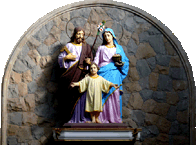|
The Gulmohar, also known as the flame tree or the May-flower tree, is a multipurpose deciduous tree that is native to Madagascar and grows up to 30 to 40 feet tall with an umbrella like canopy of 40 to 70 feet wide.
It loses most of its leaves in winter and grows lush by spring. Each leaf comprises of many leaflets, which fold up on the onset of dusk.
The scarlet orange flowers, shaped like trumpets, start blooming near the tip of the branches in summer, especially in the month of May, which is where it gets its name from. The flower, considered the symbol of love, has 5 petals with the biggest petal having yellow or white markings.
The Gulmohar seed pods grow up to 24 inches long and hold between 20 to 40 seeds at a time.
Although it is a fast growing avenue tree that is mostly planted on street sides for shade and as a windbreaker, it has an invasive root system that may cause damage to masonry, footpaths and brickwork around it. However, these invasive root systems are shallow which causes the trees to be uprooted during strong storms and the wood of the tree is weak which can be broken by strong winds.
Once established, the tree does not need too much water as it is drought resistant, yet it can survive in heavy rainfall as well. It can be propagated through seed germination and tip cuttings.
It produces a thick water soluble gum that is used as a binding agent in manufacturing tablets as well as in textile industries. The wood is used to make fences as it is water resistant and the seeds are used as beads to make necklaces. The oil derived from the seeds, is used to produce soaps and shampoos as it contains normal glycerides and is fungicidal. Extracts of the plant can be used as natural herbicides and pesticides.
IMPORTANT: The information on this website has been compiled from reliable sources, such as reference books. It is not a substitute for medical advice or treatment. Readers should always consult their physician before using or consuming a plant for medicinal purposes.
--- Click here for information about other trees on Holy Family Church campus ---
|
